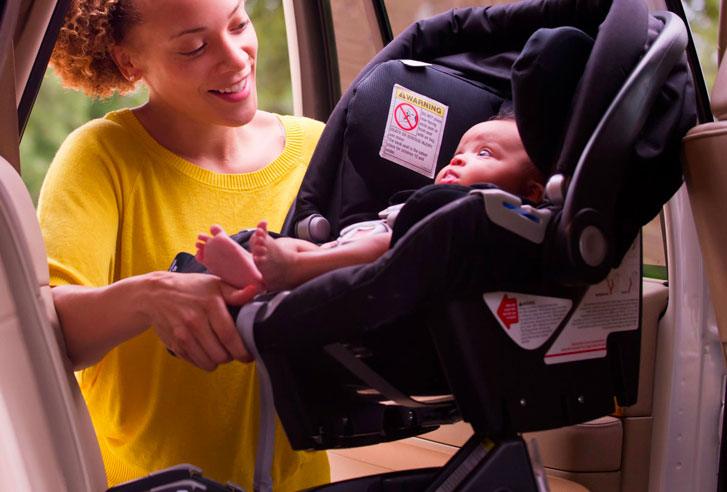Traveling with a baby can feel like an overwhelming experience as there is a huge checklist of things that need to be brought along: baby blankets, pacifiers, bibs, extra diapers, change of clothes…the list goes on and on. But the most important item to remember is the car seat. There’s no denying that the workings of a car seat can be confusing for most parents. However, it is crucial that your precious newborn is safe and protected while in the car, and riding in the proper car seat is an absolute must (not to mention that it’s the law). The following are three basic rules that are key to safely transporting your newborn:
- Install Early
It is recommended that parents install the baby car seat when mom’s pregnancy reaches 35-37 weeks. You have seat bases, latches, and shoulder straps (among other things) to learn to handle, so you will want to give yourself as much time as possible to become an expert. Rest assured, if you’re uncertain about your installation (many parents are), consider having it checked by one of the National Highway Traffic Safety Administration’s (NHTSA) certified inspection locations.
- Face the Rear
It is the state of Florida law that newborns must be rear facing up until the age of one, but it is recommended that your child stay rear-facing for as long as possible. According to new studies by the NHTSA and the Academy of Pediatrics, “children between the ages of 1 and 2 are five times safer in a crash when they ride facing the back of the car.”
- Snug & Safe
A general rule of thumb to remember when strapping in your newborn is that the harness straps should be tight enough that you can’t pinch any excess. If you see any bunching or slack in the straps, then they are too loose and need to be tightened. Along with the snugness of the harness, the snugness of your newborn’s clothing also counts. Your baby should not have any bulky layers under the harness, like blankets or winter coats. These add extra layers to the baby’s body and your perception of the strap tightness might be overestimated. Add blankets after straps are secured if you want to provide baby with extra warmth.
Soon enough, you’ll have plenty of practice taking baby in and out of the car, and all this will become second nature. That’s why it is so important to start off on the right foot and safely transport baby from day one.
Kylie Rowlands Perez is the AVP of Mount Sinai’s Maternal Child Pavilion. For more information about labor and delivery at Mount Sinai Medical Center, please contact patient relations 305.674.2990 ext.4 or ptrelations@msmc.com.


